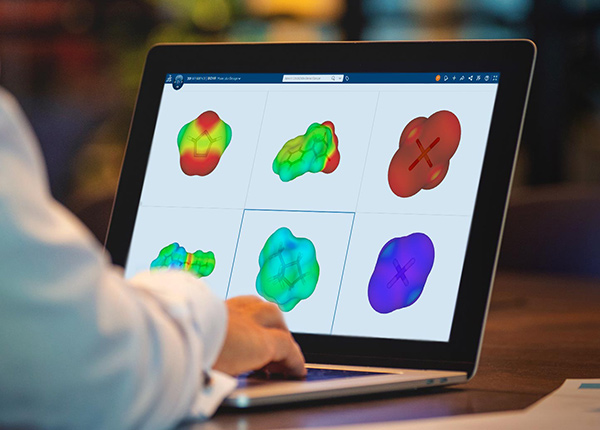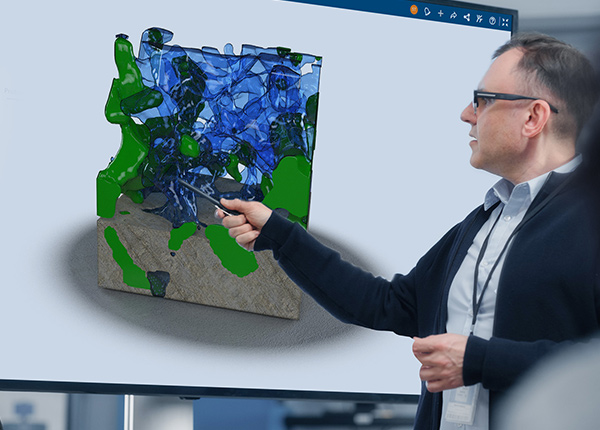Harnessing Carbon Capture and Storage with Advanced Modeling and Simulation
Modeling and simulation can make carbon capture and storage economically viable. Here’s everything you need to know.
Decarbonizing Industries with Carbon Capture and Storage Technology
The air smells clean. As you get closer, you see steam rising from the stacks. Workers in hard hats move around the capture site, checking gauges to ensure carbon dioxide (CO2) is separated from other gases and safely transported via a network of pipes. In a world that relies on fossil fuels, carbon capture and storage offers a way to decarbonize emission-heavy industries.
Harnessing Carbon Capture and Storage for a Greener Future
45 Mt
Metric tons of CO2 captured globally1
120x
Expected CCUS uptake by 2050 to achieve net-zero2
100 billion tons
Projected amount of CO2 to store by 20603
The Intergovernmental Panel on Climate Change (IPCC) has clarified that global greenhouse gas emissions must peak before 2025 and be reduced by 43% by 20304. One of the ways to do this is to substantially remove CO2 from existing systems — a goal carbon capture, utilization and storage (CCUS) aims to achieve.
Guide: The Plan To Cool the Planet
Includes a cheat sheet for scaling up CCUS with modeling and simulation.
How to Make CCUS More Cost-Effective?
Take a closer look below at how modeling and simulation on the 3DEXPERIENCE platform can help companies boost the adoption of CCUS.
1. Capture More With Less
Molecular modeling and multi-physics simulation have been useful in the development of new carbon capture technologies where companies can:
- Predict the performance of different solvents or membranes under various operating conditions to identify sustainable capture materials
- Optimize the solvent composition, temperature, pressure, and flow rate to maximize the efficiency of the capture process
- Screen hundreds of thousands of ionic liquids to identify promising candidates that have the correct volatility and CO2 absorbance properties


2. Strengthen Infrastructure
Maintaining the integrity of pipelines and infrastructure is crucial for CO2 transportation. Questions arise, such as how fluid flows within pipelines and whether pumping stations can manage increased CO2 volumes. By simulating CO2 behavior in pipelines, companies can identify potential issues like corrosion or blockages and develop strategies to mitigate these risks. These efforts are vital in ensuring the reliability and safety of carbon capture infrastructure, a cornerstone for a net-zero future.
3. Improve Carbon Sequestration
Need to identify suitable carbon storage sites and determine the best injection strategies to ensure the safety of carbon sequestered? Use molecular modeling and geomechanics simulations on the 3DEXPERIENCE platform to predict the behavior of CO2 in geological storage.
Analyze rock formations at a mesoscale level and answer these questions: How fast can CO2 be injected into the subsurface? How much CO2 can the formation contain? And most importantly, can the sequestered carbon escape?
What’s the capacity, risk and uncertainty associated with a sub-surface CO2 storage site? Virtual geological and geomechanical models are essential to evaluate the robustness of CO2 injection sites.

4. Put Carbon to Good Use
By converting CO2 into useful products, such as fuels or chemicals, CCUS can become a valuable tool for reducing greenhouse gas emissions while providing economic benefits. Through modeling and simulation, companies can virtually design and innovate new catalysts with the most yield and the least waste.
5. Collaboration Made Easy
Extensive collaboration is needed between governments, companies and other key stakeholders to make CCUS a success. In a connected environment like the 3DEXPERIENCE platform, all stakeholders can collaborate on the same 3D models — thanks to a multi-scale virtual twin from territory to equipment level — while maintaining regulatory compliance and gaining the capabilities needed to secure funding for more projects.

Carbon Capture Technology: A Key to a Sustainable Future by 2050
As the world faces the urgent challenge of reducing greenhouse gas emissions by 2050, Carbon Capture technology will play a pivotal role in achieving a sustainable future. Modeling and simulation will continue to be essential for its development and deployment.
1Source: “Carbon capture, utilization and storage” by IEA (2022)
2Source: “Scaling the CCUS industry to achieve net-zero emissions” by McKinsey & Co. (2022)
3Source: “The Role of CO2 Storage” by IEA (2019)
4Source: “The time for action is now. We can halve emissions by 2030” by IPCC (2022)
FAQ About Carbon Capturing & Engineering
Related Content with Carbon Capture Technology
Decarbonization
Rethink how your operate across your entire value chain to reduce your carbon footprint.
Carbon Capture: The Cornerstone of a Net-zero Future
Power up your energy strategy with carbon capture, utilization and storage (CCUS) through simulation and material research.
Harmonizing Progress With Sustainable Infrastructure
Redefine infrastructure projects, energy transition plans and the decarbonization of process industries with a virtual twin for a resilient future.
Realize Climate Neutrality Across Your Value Chain
Climate neutrality involves reaching a state where human-caused greenhouse gas emissions are offset by natural absorption. This requires emissions reduction efforts.

